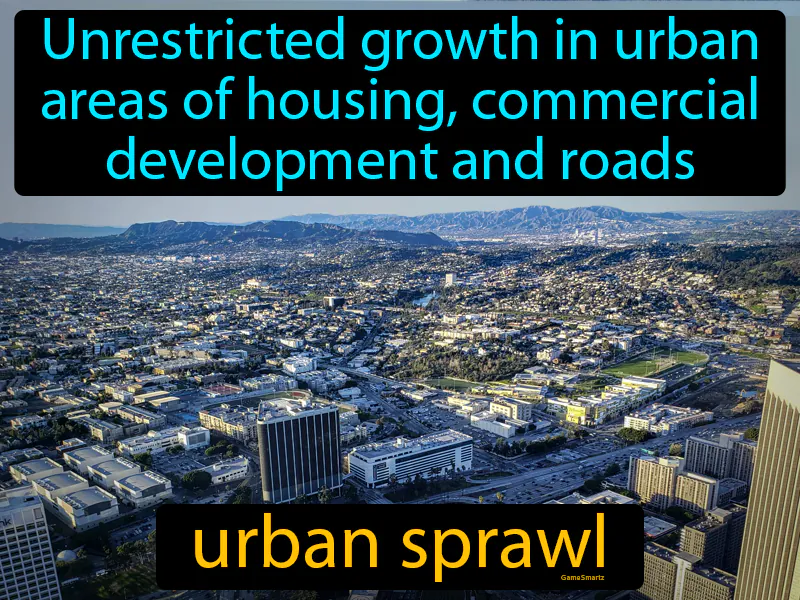Urban Sprawl
Urban Sprawl: Easy to understand
During the 1920s, the booming economy led to urban sprawl as people moved from crowded city centers to suburban areas, seeking more space and better living conditions. This expansion was fueled by the widespread use of automobiles, which made it easier for people to commute from suburban homes to urban jobs. Urban sprawl was important because it addressed the demand for housing and space but also contributed to issues like increased traffic and environmental changes. Today, urban sprawl remains relevant as cities continue to expand, often leading to longer commutes, loss of green spaces, and increased pollution. For example, in many growing cities, residents may spend more time in traffic, which can affect daily schedules and reduce time spent with family or on personal activities.

Practice Version

Urban Sprawl: Unrestricted growth in urban areas of housing, commercial development, and roads. Urban sprawl. Historically, urban sprawl refers to the rapid, unchecked expansion of cities into surrounding rural land.